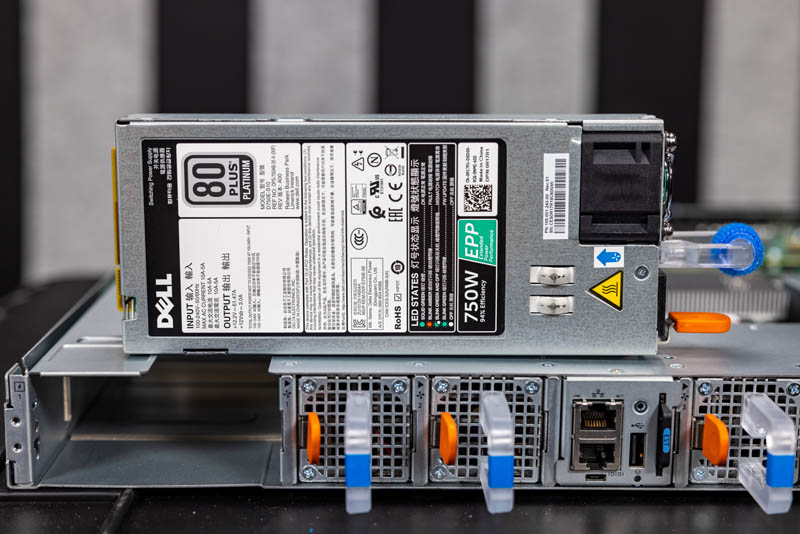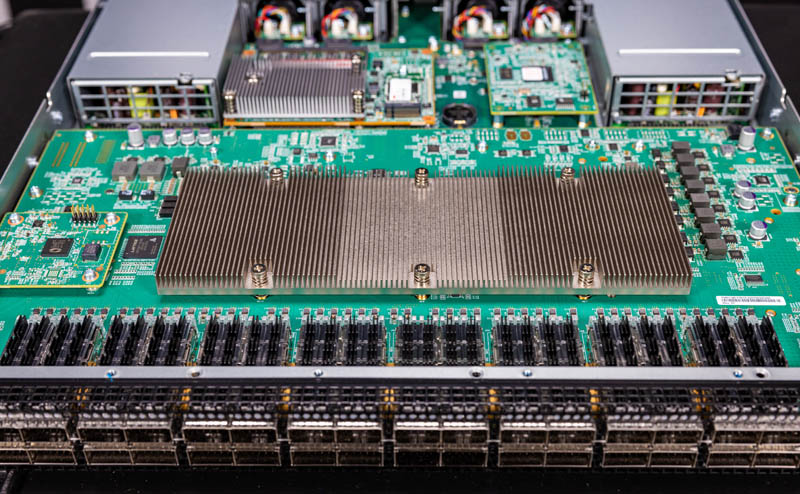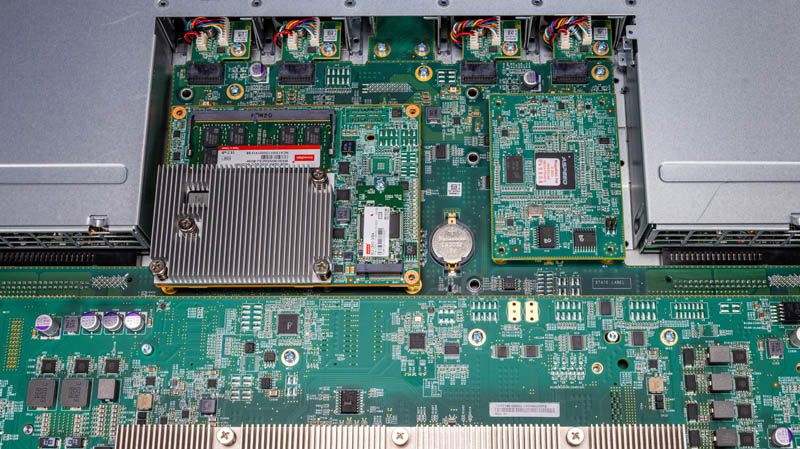Power Consumption and Noise
The switch itself comes with redundant 750W PSUs that are high-efficiency 80Plus Platinum units.

Our switches in the lab running with mostly optics are running in the 350W range. Dell lists the typical power consumption at 360W which seems reasonable from what we have seen. If one loads the switch with higher-power optics Dell says it has a 635W max. One can also lower the power consumption by using DACs. There is a large variation in these switches depending on what kind of pluggable components are being installed, so hopefully, this range is helpful.
In terms of noise, this is certainly not a quiet switch. Without optics installed, it idles around 40dba. Fans ramp from there based on the traffic and optics connected. We would not recommend it even for a lightly sound isolated cabinet in an otherwise quiet office. This is a switch designed for data center racks, not necessarily edge deployments where racks may be close to quiet spaces.
Final Words
This is one of those tear-downs that tells us a lot. Specifically, the S5148F-ON we recently looked at has very poor resale value on the secondary market, often even substantially less expensive than the S5048-ON previous generation. The Dell S5200F-ON series, like this S5232F-ON, have a large number of improvements that will help them hold more value over time.

Under the sheet metal, there are three main improvements that we should point out. First, this is based on the Broadcom Trident 3 switch chip which is relatively well supported in the open networking communities. Second, this uses the Intel Atom C3000 series that was not associated with the Atom C2000 AVR54 bug. Third, we see a shift to an industry-standard ASPEED BMC. Combined, these changes are more in the spirit of open networking.

One item we wish Dell would do is to be more open with what is inside its switches. For example, searching for “Broadcom”, “Trident”, “Intel”, and “Atom” on the S5232F-ON spec sheet did not get us any results. These are the primary components of switches. If Dell wants an open networking solution, it needs to start being more open on the basic hardware with its customers.
Overall, this seems to be a fairly nice package. So far it has been working well for us and may end up being part of our fiber build-out series. If it does make it to that series, you will see a lot more of this switch on STH, but we have a few other options.




I love that you do these.
Interesting article – thank you. I was a bit confused by the 124x 25G part, since the switch spec sheet specifically states support for 128x 25G.
Esteben:
Max 25GbE density 124 (QSFP28 breakout)
Source: S5200-ON Spec Sheet
It is a typo in the table. In the text in the spec sheet it says:
In addition to 100GbE Spine/Leaf deployments, the S5232F-ON can also be used in high density deployments using breakout cables to achieve up to 128 10GbE or 128 25GbE ports.
Also in older spec sheets it lists the same 128 25GbE port.
We always go by spec tables if there is no clear abundance of documentation otherwise. The 10GbE ports are listed as 124 in the table and 128 in the text as well. Dell has had years to produce correct documentation and we have to assume the table is correct since that is what most people read and has the most specs.
I’d like to see the 96 port version you’ve mentioned in the video.
Did you by any chance get serial-over-lan to work on the BMC. I’ve tried this at one point, bit never succeeded. Also, Dell support and others further in the organization was not of much help. It seems like something that should just work.
Did you get sonic into a working state? One of my colleagues didn’t find it easy to get ports configured with the open version and gave up in the end.